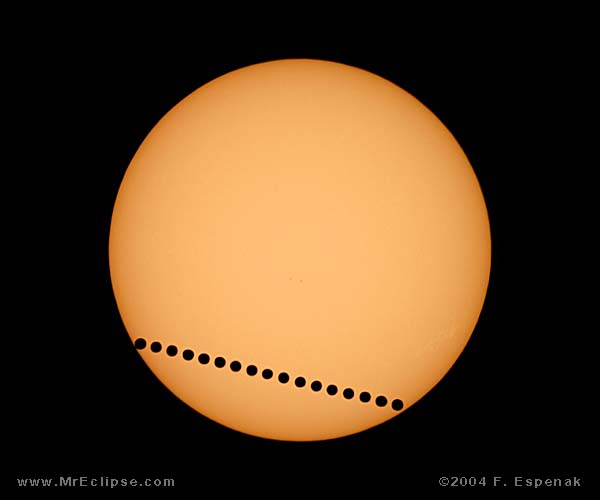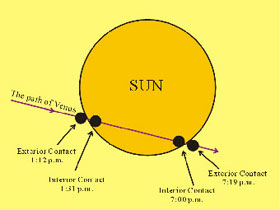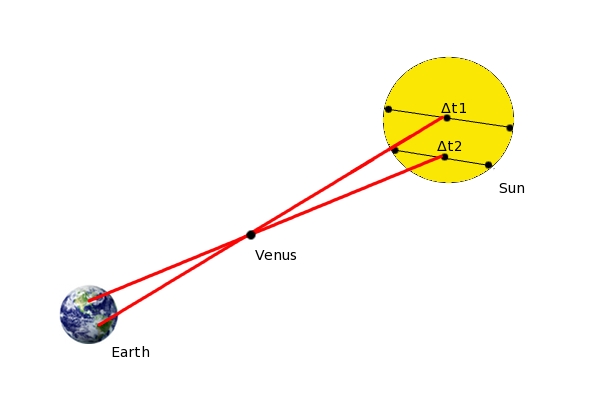70 Falmouth Street Portland, Maine 04103
43.6667° N 70.2667° W
Altitude: 10 feet below sea level
Founded January 1970
Julian Date: 2458975.16
2019-2020: CXLI
THE DAILY ASTRONOMER
Wednesday, May 6, 2020
Remote Planetarium 28: The Sun Part II: How We Know the Sun's Distance
___________________________________
TWO NOTES:
-Don't hang up!
In today's class we'll be using some mathematics in order to explain the concepts involved. We'll be as gentle as possible during these applications.
-The "syllabus" I provide on weekends has sometimes proven to be unrealistic.
My initial intention was to explain how we know the Sun's distance, mass and composition. After working through the article, I realized that the distance explanation would provide ample material for one day. (I can only input so many images before the system doesn't permit me to transmit the article.) Tomorrow we will focus on the Sun's mass and composition. On Monday, we'll discuss the Sun's life cycle.
________________________________________________________________
At some point in our childhoods, we all learn that the Sun is about 93 million miles away on average. That its distance is not constant but instead varies between 91.5 million to 94.5 million is a fact we learn in later childhood or adulthood. This value is one of those nifty little facts that we tend to shelve in the crowded back recesses of memory. One must wonder: how could we humans possibly have determined this distance? Earth's diameter is only slightly less than 8,000 miles. Astronauts haven't traveled farther than about a quarter million miles away from our planet. Of course, astronomers did determine this distance. Remarkably, the first accurate measurement was made in the 18th century!
Before we explain the distance determination method, we should review some concepts.
Kepler's Third Law of Planetary motion.
This relation equates a planet's orbital period with its average distance The square of a planet's period (expressed in years) equals the planet's mean distance (expressed in astronomical units.)
- Astronomical unit: Earth's average distance from the Sun, which we now know to be 93 million miles.
This law, published in 1619, enabled future astronomers to determine each planet's average distance from the Sun simply by measuring their orbital periods. We have the following table of planet distances in AU
- MERCURY 0.387
- VENUS 0.723
- EARTH 1.000
- MARS 1.523
- JUPITER 5.203
- SATURN 9.537
- URANUS 19.191
- NEPTUNE 30.07
- PLUTO 39.5
While these values provide us with a ratio of the planet distances relative to Earth's, they do not include absolute values. The list shows us, for instance, that Venus' mean distance from the Sun is about 72% that of Earth's. However it doesn't tell us anything about Earth's true heliocentric distance.
To determine this value, ingenuous 18th century astronomers traveled around the world to observe a transit of Venus.
A transit of Venus occurs when the planet Venus appears to move directly across the Sun from our perspective. Such transits can only occur when Venus passes through inferior conjunction while at or near a node (the intersection point connecting the orbits of Earth and Venus.) Although Venusian transits are rare, two occurred in the 18th century: 1761 and 1769. (Venusian transits tend to occur in eight year pairs separated by more than a century.) Astronomers went to stations at various points on Earth to observe both transits in an effort to determine the Sun's distance. These observation teams went to places as far flung as Tahiti and Newfoundland. One expedition was led by Captain Cook, himself, who traveled to Tahiti. Also involved were Jeremiah Dixon and Charles Mason, of Mason-Dixon line fame.
How would a planetary transit enable them to make this determination?
Let's examine this "side view" of a Venusian transit:
In this diagram, the Sun is to the left, Venus is the center circle with Earth to the right.
When a transit occurs, Venus passes directly across the Sun because the orbits of Earth and Venus are nearly perfectly aligned. By examining the geometry of the situation, we'll be able to understand the theory behind this distance determination method:
Don't hang up...yet!
The top RE is Earth's distance from the Sun
Rv is Venus' distance
Rv - RE is the distance separating Venus and Earth.
d = the distance separating two points at which the Venusian transit is observed.
Fortunately, Kepler's law tells us that Rv = 0.7 AU and Rv - RE = 0.3 AU.
If different observers can measure the length of their respective transit chords across the Sun, they can know the relative distance between the chords.
A transit chord is just the apparent path Venus follows across the Sun.
The image above shows the transit chord during the 2012 transit.
As we can see from the above highly exaggerated image, observers at different latitudes will see different chords during the transit. While these observers cannot directly measure the chord lengths, they can measure the amount of time Venus requires to traverse the Sun from their perspective. The longer the transit time, the longer the associated chord will be.
By knowing the distance in miles between the observation points; the distances in AU between the Sun, and the vertical angles, one can use ratios to measure the distances from Earth to Venus to the Sun. On advice of counsel, I opted not to include the mathematical formulae. We focused instead on the concept involved in making this determination.
Historical note: The value they derived was about equal to 90 million miles, very close to today's accepted value.
To subscribe or unsubscribe from the Daily Astronomer:






